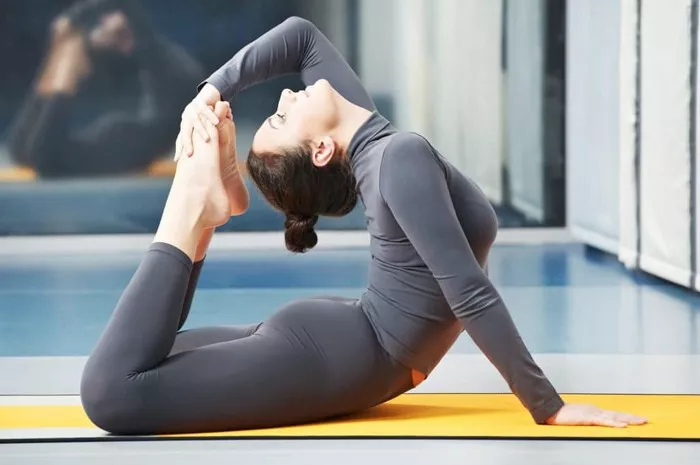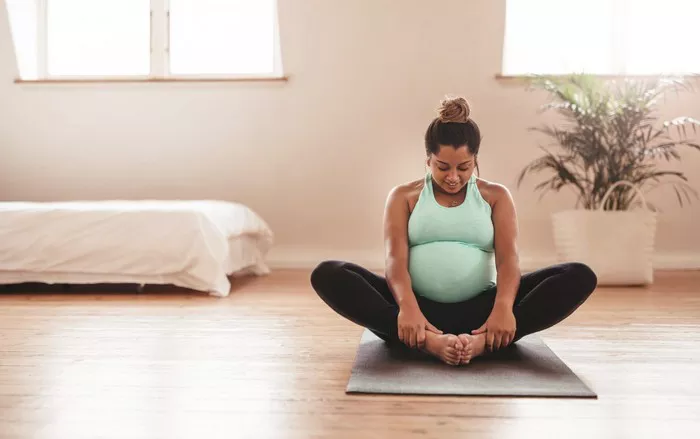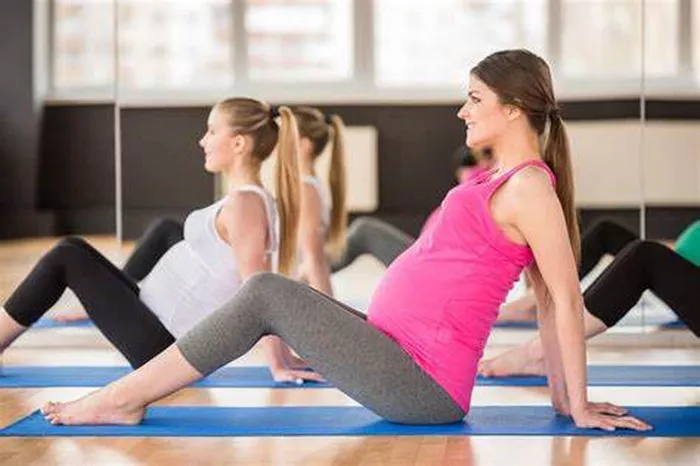Hatha yoga, celebrated for its accessible poses and calming breathing techniques, has swept the globe, drawing in enthusiasts of all ages and backgrounds. It not only enhances physical flexibility but also soothes the mind. One burning question that frequently surfaces among these eager practitioners is how often they ought to engage in Hatha yoga sessions. The answer is far from universal, hinging on a diverse array of personal elements that vary from one individual to another.
Benefits of Regular Hatha Yoga Practice
Physical Flexibility and Strength Building
Regular Hatha yoga practice, say 3 – 5 times a week, can significantly improve physical flexibility. Through poses like the forward fold (Uttanasana) and the triangle pose (Trikonasana), the muscles and connective tissues are gradually stretched. As you repeat these poses in multiple sessions, your body adapts, becoming more flexible over time. Moreover, holding poses such as the plank (Phalakasana) helps build core and upper body strength. Each practice session contributes to toning the muscles, enhancing overall physical fitness.
Mental Calmness and Stress Reduction
Practicing Hatha yoga 2 – 4 times a week can have a remarkable impact on mental well-being. The combination of slow, deliberate movements and focused breathing activates the body’s relaxation response. For instance, during a yoga session, as you focus on your breath while moving through poses, you are diverting your attention from daily stressors. This regular practice helps in reducing anxiety levels and promoting a sense of mental calmness. Even a single session can leave you feeling more centered, but consistent practice amplifies these mental benefits.
Factors Influencing Hatha Yoga Practice Frequency
Fitness Level and Experience
Beginner Yogis: For those new to Hatha yoga, starting with 1 – 2 sessions per week is ideal. Beginners need time to learn the basic poses correctly and allow their bodies to adjust to the new physical demands. Rushing into too many sessions too soon can lead to injuries. For example, if you’re new, your muscles might not be accustomed to the stretching in poses like the seated forward bend. Starting slow gives your body time to build the necessary strength and flexibility.
Intermediate Practitioners: Intermediate yoga enthusiasts can increase their frequency to 3 – 4 times a week. At this stage, they have a better understanding of the poses and can handle more intense sessions. They can focus on refining their poses, such as achieving a deeper stretch in the warrior II pose (Virabhadrasana II), and exploring more complex variations.
Advanced Yogis: Advanced practitioners may practice Hatha yoga 5 – 7 times a week. Their bodies are highly adaptable, and they can engage in more challenging sequences. They can perform poses like the headstand (Sirsasana) or the full wheel pose (Urdhva Dhanurasana) with greater ease and precision. Their regular, frequent practice allows them to maintain a high level of physical and mental discipline.
Time Availability
Busy Schedules: If you have a busy work or study schedule, even 1 – 2 sessions a week can be beneficial. You can choose shorter sessions, perhaps 30 – 45 minutes long, focusing on a few key poses. For example, you could do a quick sequence of the mountain pose (Tadasana), downward-facing dog (Adho Mukha Svanasana), and the child’s pose (Balasana) during your lunch break or in the morning before starting your day.
Flexible Schedules: Those with more flexible schedules can take advantage of practicing 4 – 5 times a week. This allows for longer, more comprehensive sessions. You can include a wider variety of poses, pranayama (breathing exercises), and meditation in each session, fully immersing yourself in the practice of Hatha yoga.
Ideal Practice Frequencies for Different Goals
General Well-being
To maintain general well-being, aiming for 2 – 3 Hatha yoga sessions per week is a great target. These sessions can include a mix of gentle stretching poses, basic strength-building poses, and some simple breathing exercises. This frequency helps keep the body flexible, the mind calm, and provides a regular dose of relaxation in the midst of a busy life.
Weight Management
For those looking to manage their weight through Hatha yoga, 3 – 5 sessions per week can be effective. While yoga is not a high-intensity calorie-burning exercise like running, regular practice can increase metabolism over time. Additionally, the mindful eating habits that often develop as a side effect of consistent yoga practice can contribute to better weight management. The combination of poses and the mental awareness cultivated in yoga can help you make healthier food choices.
Injury Rehabilitation
In the case of injury rehabilitation, the frequency of Hatha yoga practice should be determined in consultation with a healthcare professional. Generally, starting with 1 – 2 gentle sessions per week is advisable. These sessions should focus on poses that do not exacerbate the injury but rather help in strengthening the surrounding muscles and promoting flexibility in a controlled manner. For example, if you have a knee injury, poses like the seated hero pose (Virasana) with modifications can be beneficial, but only when practiced under proper guidance and at an appropriate frequency.
Listen to Your Body: Adjusting Practice Frequency
Your body is the best guide when it comes to determining the right frequency of Hatha yoga practice. If you feel overly fatigued or experience pain during or after a session, it might be a sign that you’re practicing too often or pushing yourself too hard. In such cases, reducing the frequency to allow your body to recover is crucial. On the other hand, if you find that your body is adapting well and you have the energy, you can gradually increase the frequency. Pay attention to how your body feels after each session – if you feel refreshed and energized, you’re likely on the right track with your practice frequency.
Conclusion
In conclusion, the ideal frequency of Hatha yoga practice varies from person to person. It depends on factors such as your fitness level, experience, time availability, and specific goals. Whether you’re a beginner starting with a couple of sessions a week or an advanced practitioner practicing almost daily, the key is to listen to your body and make adjustments as needed. Regular Hatha yoga practice, at the right frequency for you, can bring about a multitude of physical and mental benefits, leading to a healthier, more balanced life. So, take the time to experiment and find the rhythm that works best for you on your Hatha yoga journey.
Related Topics



















